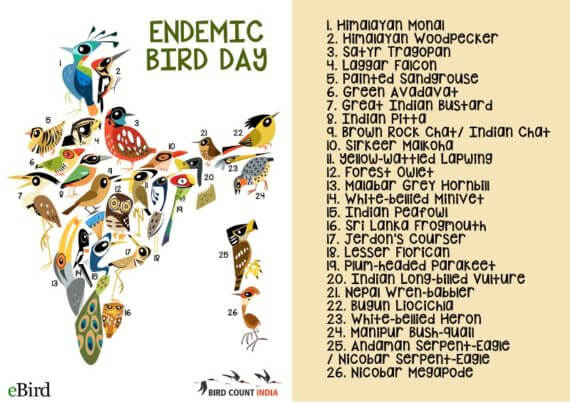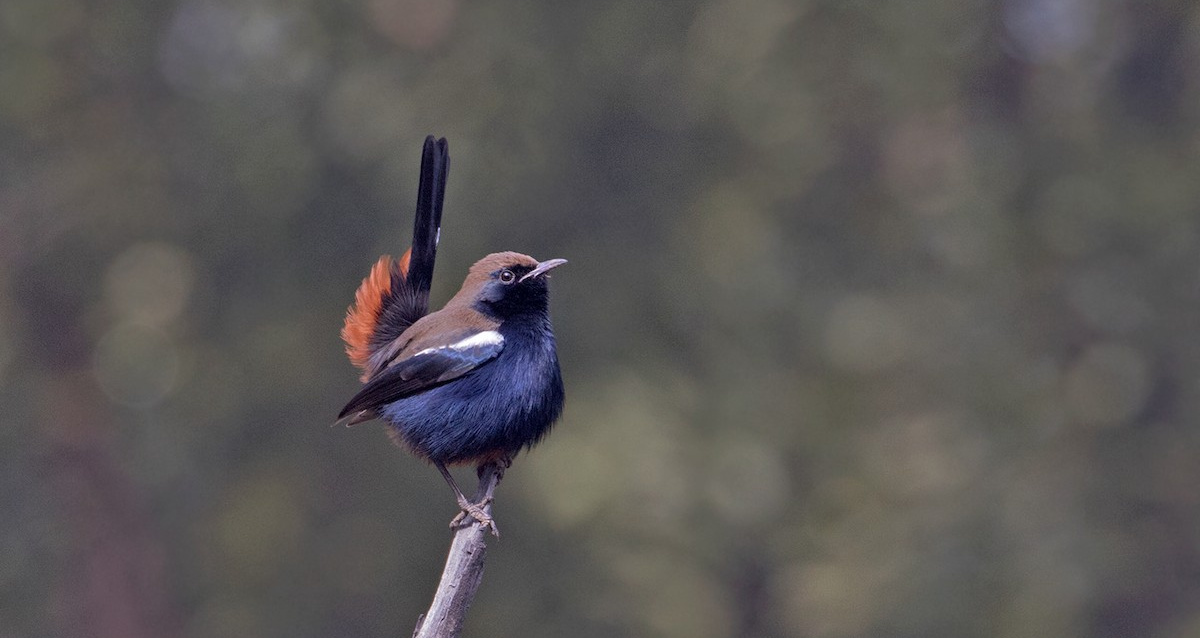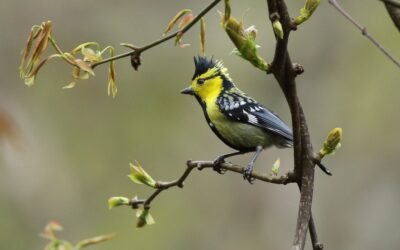
Endemic Birds of India by Rohan Chakravarty. If you like this illustration, you can purchase it on a t-shirt to wear on Endemic Bird Day!
Grey Francolin, Indian Peafowl, Common Hawk-Cuckoo, Indian Grey Hornbill, Black-rumped Flameback, Plum-headed Parakeet, Indian Pitta, Ashy Prinia, Jungle Babbler, Indian Robin, Brahminy Starling and Purple-rumped Sunbird.
What do these common birds have in common? They are all endemics to our region; that is, they are found nowhere else in the world (at least not naturally).
This 5th of May, let’s celebrate our endemic birds (there are over 200 of them) by going out birding and trying to spot as many of them as possible. The date coincides with Global Big Day, so thousands of people all over the globe will be out birding that day.
Read more about Endemic Bird Day here, and mark the date in your calendar!




